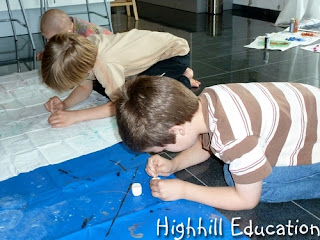Enjoyed by the Ancient Romans, Tabula is the ancestor of the modern game backgammon. Both games involve 15 pieces, 2 opponents, 2 dice, moving the pieces separately per the numbers on the dice, sending opponents pieces that are landed on back to the start and safe spaces created when more than one piece occupies the same space. Some versions of the rules incorporate 3 dice.
When we studied Mesopotamia we played Royal Game of Ur which is believed to be an earlier ancestor to the game backgammon. The game Ludus Duodecim Scriptorum was played sometime after the Royal Game of Ur and before Tabula. The board game Sorry is a modern game that shares these common ancestors.
Playing these different games is not only fun, but lets us see the commonalities between the various games. The commonalities between games somewhat parallel the commonalities between people. Therefore, knowing the locations the games were played gives us a glimpse into how information traveled through various civilizations.
The first piece of equipment required for the game was two sets of 15 moving pieces.
Ours were created by painting small rocks two different colors.
Next two dice were created from clay.
Some children marked the numbers on their dice with dots and others used Roman Numerals.
Each game board required four strips with six spaces. The strips were created from file folders.
Marking the numbers 1-24 in Roman Numerals on the strips was a simple math review.
Next, the strips were glued onto a sheet of poster board in one of two patterns. Some boards were laid out like backgammon with the numbers going in order in two strips. Others were laid out in a square.
Then the boards were decorated and they all came out so different.
Playing the game involves strategy similar to backgammon and is good for counting, adding and general number sense! Here's a link to the rules.
To see our other Roman Unit Study activities please visit our History Page.

This post is linked to:
Share-it Saturday
Relentlessly Fun












It looks like all your children enjoyed this game! What a fun way to teach history concepts! Thank you for linking up to the After School Link Up!
ReplyDelete